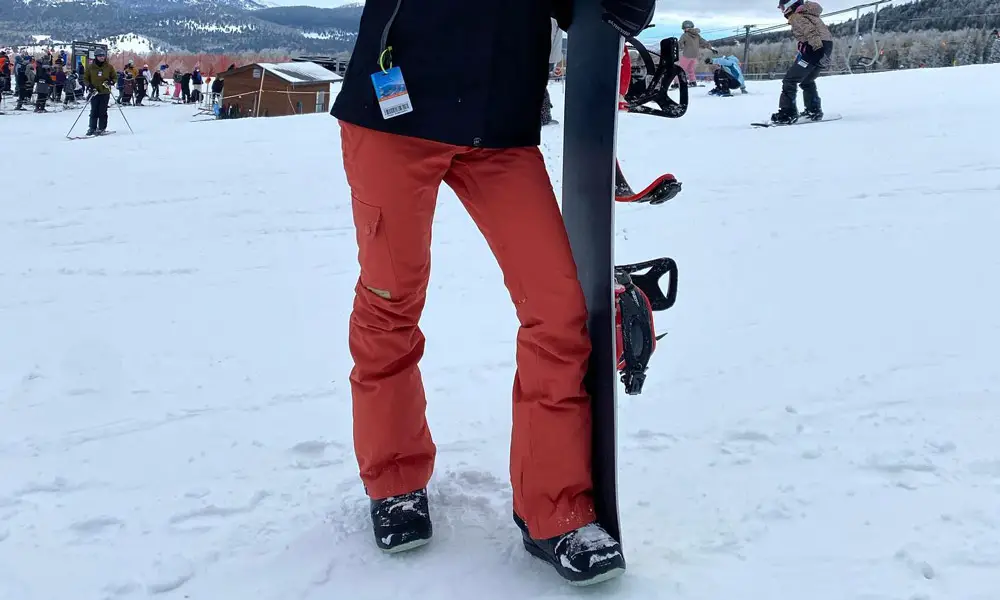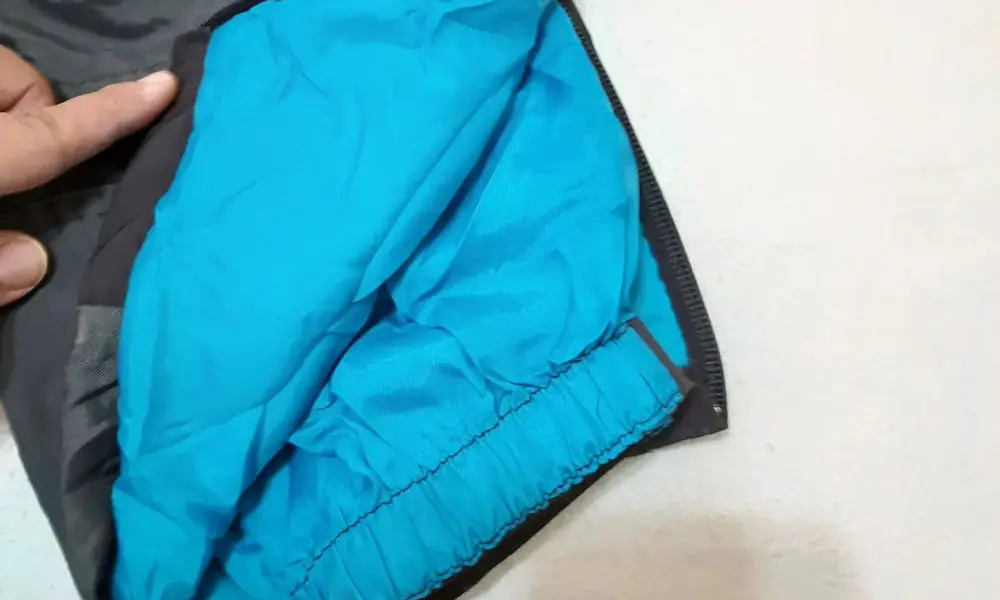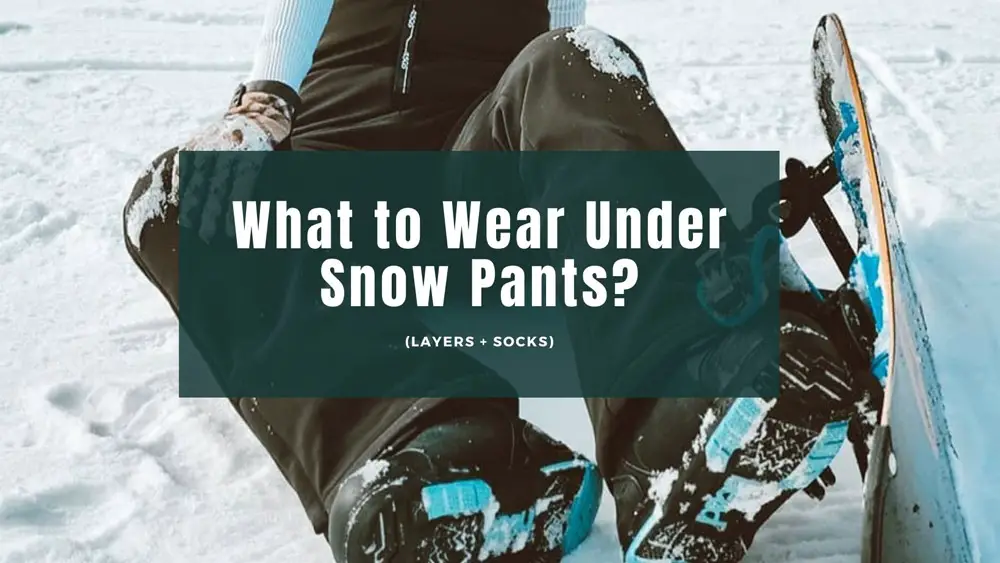When it comes to enjoying your first day on the slopes, dressing well is an essential part of your ensemble, you need a balance of technical clothing that can keep up with your active lifestyle and stay warm in the mountains.
What to wear under snow pants is one of the most important decisions to be prepared for fast-changing weather conditions. They can either keep you comfortable and warm while providing maximum flexibility to perform tricks on the mountain or prevent you from having fun at all due to your discomfort.
If you’re new to winter activities and don’t know what to wear under snow pants, this article is for you. We’ll discuss everything you need to know on how to keep your lower body warm while doing snow sports activities.
What to Wear Under Snow Pants?

Whether you’re going to do snowboarding or skiing, you have to wear a pair of long underwear as a base layer under your snow pants to keep the lower body warm and dry.
Usually, you need to wear two layers of lower-body clothing for warmth: a base layer that draws moisture away from your skin and then insulates itself with trapped body heat, and an outer layer that is windproof and water resistant.
Skiers and snowboarders are often moving around at high speeds, getting wet by their own sweat or the sleet on the slopes. An excellent base layer will absorb moisture before it becomes a problem.
Base Layers & Long Underwear
There are a few things that make a good base layer. For one, it shouldn’t irritate since it is the one that is in contact with your skin. Next, it should be tight fitting to make sure that it can keep your body heat. And lastly, a thermal base layer should have that moisture-wicking property that can help get rid of sweat. A base layer is important for both the upper and lower bodies.
You can choose from synthetic and merino wool materials whenever you’re going for a thermal base layer. For upper body thermal base layers, it’s common for most skiers and snowboarders to use long-sleeved base layers. For lower body base layer options, you can go with thermals, Long Johns, or long underwear.
You might be interested in this article: How Long Should Ski Pants Be?
How to Choose Ski Base Layer Under Snow Pants?
There are a lot of things that you want to consider if you’re trying to buy a base layer that you can use underneath your snow pants. Since there are a lot of products to choose from, it only makes sense that you narrow down your options using these features.
Weight
The first thing that you need to consider is the weight of the base layer. Keep in mind that clothing for skiing is designed to help you generate speed. It means that lighter clothing can have its advantage if you plan to go fast. GSM stands for grams per square meter which is a measure of a fabric’s weight per 1 square meter. Merino wool is known to have around 150 gsm, while synthetic materials are even lighter in some situations.
It doesn’t always mean that lighter is always better. There are instances when the ability of the base layer to contain heat is also compromised if it gets lighter.
Materials

Another important consideration for choosing a base layer underneath snow pants is to know the materials used by the manufacturer. Some brands use merino wool, while others use synthetic materials.
There are a lot of skiers and snowboarders who swear by the benefits that merino wool can offer with proper care. What most people love with merino wool is its ability to retain heat while being breathable at the same time. It also dries quickly with no smell, resists odor-causing bacteria, regulates body temperature, and is naturally soft and silky.
But what a lot of skiers and snowboarders don’t know is that merino wool has a high level of crimp, which results in a less stable knit. What’s even worse is that it loses its insulation properties when wet. What this means for you as a consumer is that if your base layer gets wet, it may not be able to trap heat anymore.
That’s why you need to know the material used for your base layer because it can make a huge difference. What some people do is that they go for synthetic materials, which are more affordable but similar to merino wool when it comes to its ability to wick away moisture.
But since it is often made of nylon and polyester, synthetic base layers can be heavier than merino wool products. What’s even worse about these materials is that they don’t work as well when wet like merino wool products do.
Breathability
You also need to consider when buying the best base layer to wear under your snow pants is its breathability. What this means for you is that it should be able to regulate the temperature of your body and allow it to breathe. You don’t want a base layer that can retain heat but can also lead to overheating when worn underneath your snow pants. What you need to go for is something that can let your skin breathe while retaining heat which means that moisture-wicking material should be used by the base layer.
Moisture-wicking
Moisture-wicking ability is often thought to be the same as breathability. Though they are somewhat related, moisture-wicking property pertains to the fabric’s ability to pull moisture away from the skin via capillaries.
A Good Pair of Ski Socks
An important thing that is often underestimated is the type of socks you will use along with your snow pants. Just like base layers, there are two kinds of ski socks that you can choose from. First, you have merino wool. This material came from merino sheep, known for its odor-resistant facet, not to mention its ability to keep your feet warm.
Next, you also have synthetic blend socks. Over the years, this option became more popular, especially among users who are allergic to using wool. Synthetic materials also have moisture-wicking properties. Unfortunately, one of the biggest complaints about synthetic ski socks is that it tends to get smelly it gets sweaty. Nowadays, there are synthetic compression ski socks that have antimicrobial properties that somehow lessen the smell.
FAQs:
Can you wear nothing under ski pants?
No, this is not a good idea because snow pants will not be enough to keep you warm. As a rule of thumb, always have a base layer underneath ski pants
Can I wear leggings under ski pants?
Wearing leggings is ideal for those who are wearing ski pants. Some leggings have thermal properties. These synthetic materials also stretch and form on your body. It meets two of the most important criteria when choosing a base layer underneath ski pants—tight-fitting and warm.
Do you wear regular pants under ski pants?
You should never wear regular pants underneath your ski pants or your snow pants. The reason is that cotton tends to absorb moisture. This will make you feel cold. Plus, there are some fabrics like jeans that don’t offer the mobility that you need.
Final Thoughts
Wearing snow pants isn’t the only thing that you will have to worry about if you plan on doing sports activities such as skiing. It is equally important to have the right clothes underneath. Having the right base layer can help keep you warm and comfortable.
The thing with base layers is that you just can’t use your regular pants. What you want is to find something that is warm, tight-fitting, breathable, and has moisture-wicking properties. Whether you’re going after a synthetic base layer or something made of merino wool, just be sure to do your research.
I hope that this guide helps answer your needs. If you ever have any more questions or advice, please let me know in the comments below- we’re all here to help each other 🙂


